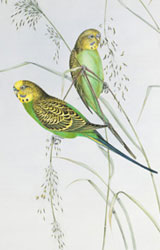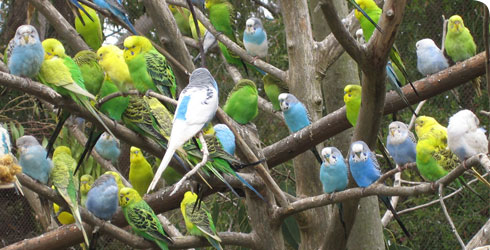Behaviour and conservation

Budgerigars in John Gould’s Birds of Australia © Natural History Museum, London
Budgerigars are highly social, and form fast-flying, mobile flocks. Under certain conditions, flocks of hundreds of thousands of birds may develop.
Flocks will tend to forage in the early morning, before seeking shade during the hottest part of the day. During this rest period, they often socialise, with continuous chirruping.
A very important social behaviour is mutual preening, particularly around the head, which helps birds keep difficult to reach areas in good order and also strengthens social bonds.
Captive budgerigars show the same behaviour when enjoying a gentle head scratch or preening their owner’s hair.
Migration
Wild budgerigars are highly nomadic in the arid interior of Australia. Flocks can move significant distances in response to climatic conditions, particularly rainfall, as they search for sources of water and green vegetation.
Conservation
The budgerigar is rated as of least concern, due to its extensive natural range and large population numbers.
Populations fluctuate with climate, but overall the trend is thought to be increasing. In particular, artificial water sources for livestock and farming in the outback seem to have benefited budgerigars.
